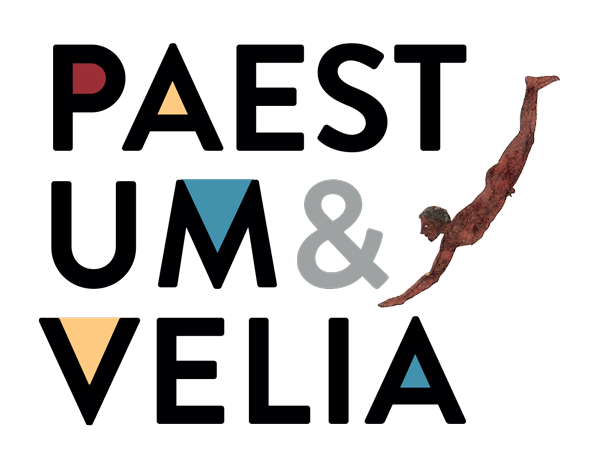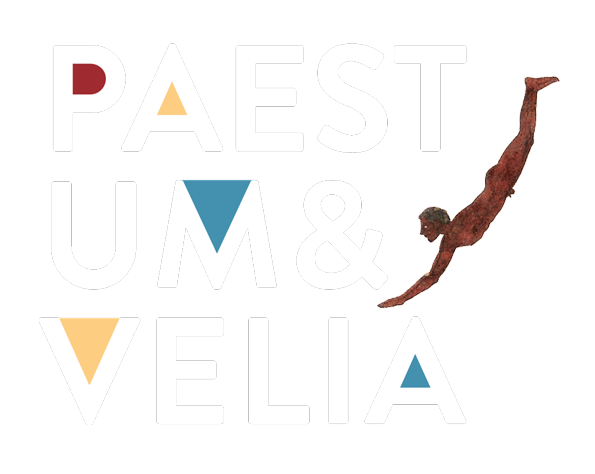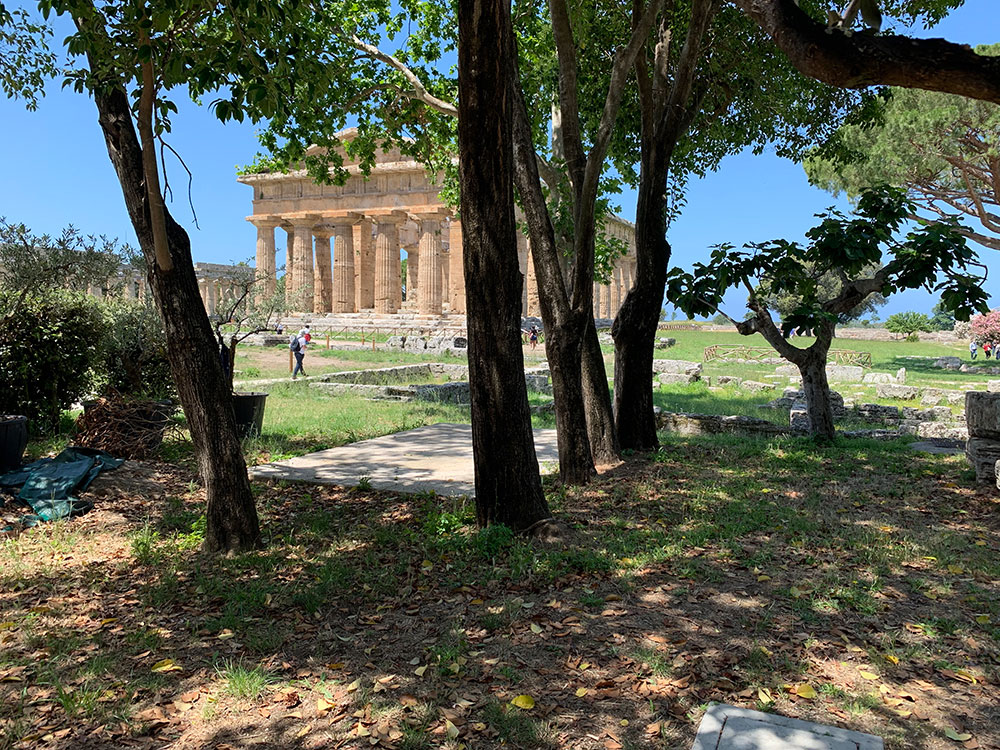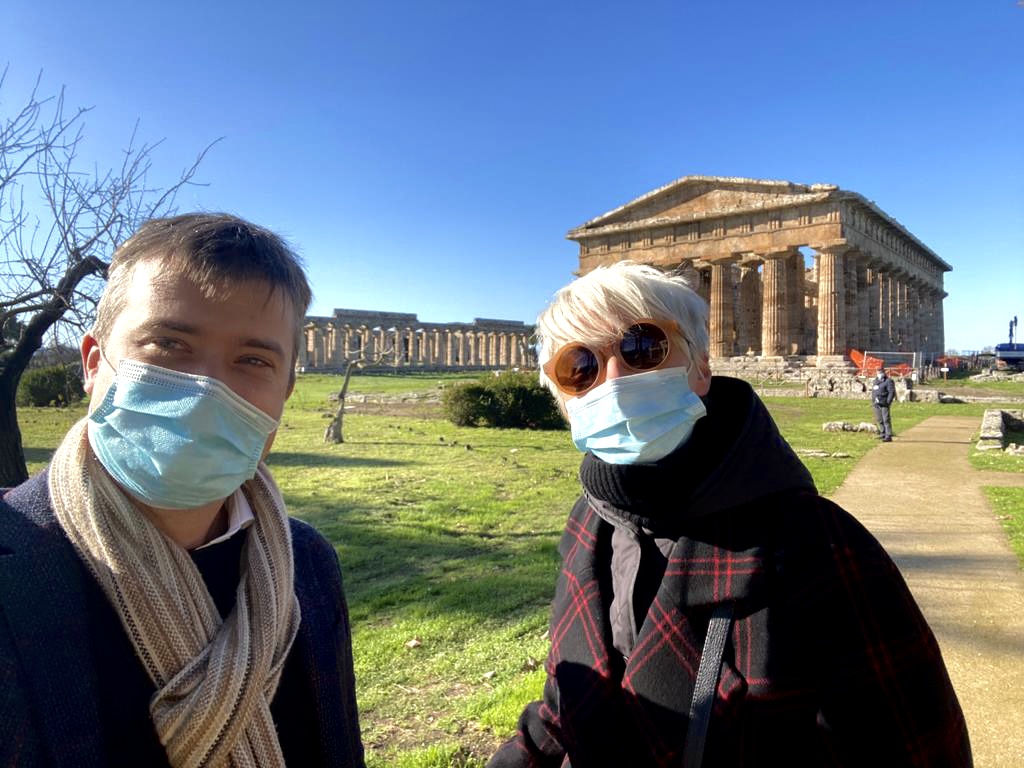All examples are played on a 3D-printed model in PA12 of the Paestum aulos, with reeds as described in the article, made of sections of arundo donax with an internal diameter matching that of the main bores.
1) Overlapping holes
The overlapping range of holes on both pipes, fully opened and closed sequentially.

 Paestum_holes_overlap.wav
Paestum_holes_overlap.wav
 Paestum_holes_overlap.png
Paestum_holes_overlap.png
2) The central tetrachord in enharmonic shape
The core enharmonic tetrachord is produced starting from the lowest note for which both pipes have a fingerhole (barýpyknon, hypátē), half-opening the adjacent higher holes (mesopyknon, parypátē), fully opening the same holes (oxýpyknon, likhanós), and fully opening the next but one holes (mésē), keeping the intermediate fingerholes closed.

 Paestum_enh_tetr.wav
Paestum_enh_tetr.wav
 Paestum_enh_tetr.png
Paestum_enh_tetr.png
3) The central tetrachord in diatonic shape
The core diatonic tetrachord is produced starting from the lowest note for which both pipes have a fingerhole (hypátē), half-opening the adjacent higher holes (parypátē), opening the next higher holes (likhanós), and fully opening the next holes again (mésē).

 Paestum_dia_tetr.wav
Paestum_dia_tetr.wav
 Paestum_dia_tetr.png
Paestum_dia_tetr.png
4) The central diatonic tetrachord plus disjunctive tone above
This basic pentachord augments the diatonic tetrachord of (3) with the next higher holes, fully exploiting the range that the two pipes can play in unison.

 Paestum_dia_pent.wav
Paestum_dia_pent.wav
 Paestum_dia_pent.png
Paestum_dia_pent.png
5) Aristides’ Syntonolydian scale on the higher pipe
Combining the central enharmonic tetrachord of (2) with the highest fingerhole produces the scale that Aristides Quintilianus identifies as the ‘taut Lydian’ Plato had in mind when writing the Republic.

 Paestum_S_snytonolyd.wav
Paestum_S_snytonolyd.wav
 Paestum_S_snytonolyd.png
Paestum_S_snytonolyd.png
6) Aristides’ Syntonolydian scale, both pipes
The scale of (5) played on the higher pipe, with the lower pipe providing anything from maximal unison to maximal intervallic accompaniment.
7) With plugged vent hole on the lower pipe
The effect of accessing the lowest available note on the instrument by plugging the vent hole on the lower pipe.
Instruments, reeds and recordings by Stefan Hagel, © 2020.






